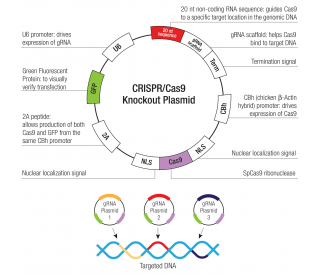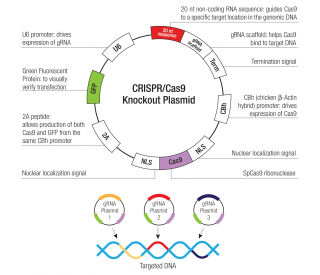详细说明
Species Reactivity
Mouse
Specificity
Detects mouse Lgr5/GPR49 in direct ELISAs. Stains mouse Lgr5 transfected cells but not irrelevant transfectants in Flow Cytometry.
Source
Monoclonal Rat IgG 2B Clone # 889901
Purification
Protein A or G purified from hybridoma culture supernatant
Immunogen
Mouse Lgr5/GPR49 N-terminal peptide
Ala21-Cys34
Accession # Q9Z1P4Formulation
Supplied in a saline solution containing BSA and Sodium Azide.
Label
Phycoerythrin
Applications
Recommended
ConcentrationSample
Flow Cytometry
0.1 µg/10 6 cells
See below
Please Note: Optimal dilutions should be determined by each laboratory for each application. are available in the Technical Information section on our website.
Data Examples
Flow Cytometry | Detection of Lgr5/GPR49 in HEK293 Human Cell Line Transfected with Mouse Lgr5/GPR49 and eGFP by Flow Cytometry. HEK293 human embryonic kidney cell line transfected with either (A) mouse Lgr5/GPR49 or (B) irrelevant transfectants and eGFP was stained with 0.1 μg Rat Anti-Mouse Lgr5/GPR49 PE‑conjugated Monoclonal Antibody (Catalog # FAB82401P). Quadrant markers were set based on control antibody staining (Catalog # ). View our protocol for . |
Preparation and Storage
Shipping
The product is shipped with polar packs. Upon receipt, store it immediately at the temperature recommended below.
Stability & Storage
Protect from light. Do not freeze.
12 months from date of receipt, 2 to 8 °C as supplied.
Background: Lgr5/GPR49
Leucine‑rich repeat G‑protein‑coupled Receptor 5 (Lgr5), also known as GPR49, is a 907 amino acid (aa), approximately 97 kDa (calculated), seven‑transmembrane glycoprotein receptor in the Lgr family of cell surface receptors. The subfamily of Lgrs comprising Lgr4, Lgr5, and Lgr6 are G‑protein‑independent mediators of the potentiating effect of R‑Spondins on Wnt signaling. Lgr5 binds and forms complexes with R‑Spondins, Frizzled Wnt receptors and LRP Wnt co‑receptors. The region of the mouse Lgr5 long extracellular domain used as an immunogen shares 90% and 95% amino acid sequence identity with human and rat Lgr5, respectively. Lgr5 is found on embryonic and adult epithelial stem cells. Lgr5+ stem cells can produce all epithelial cell types of the intestinal crypts. It is upregulated in stem cells that give rise to cancers such as intestinal, hepatocellular, pancreatic and ovarian carcinomas.
Long Name:
Leucine-rich Repeat Containing G Protein-coupled Receptor 5
Entrez Gene IDs:
8549 (Human); 14160 (Mouse); 299802 (Rat)
Alternate Names:
FEX; G protein-coupled receptor 49; GPR49; GPR49G-protein coupled receptor HG38; GPR67; G-protein coupled receptor 49; G-protein coupled receptor 67; GRP49; HG38; leucine-rich repeat containing G protein-coupled receptor 5; leucine-rich repeat-containing G protein-coupled receptor 5; leucine-rich repeat-containing G-protein coupled receptor 5; Lgr5; MGC117008; orphan G protein-coupled receptor HG38







![Anti-CARD11 antibody [EPR2557] 100µl](https://yunshiji.oss-cn-shenzhen.aliyuncs.com/202407/25/ryuecwsu03m.jpg)
![Anti-CARD11 antibody [EPR2557] 40µl](https://yunshiji.oss-cn-shenzhen.aliyuncs.com/202407/25/0l4lvuuesv1.jpg)

![Anti-Caspase-9 antibody [E23] 100µl](https://yunshiji.oss-cn-shenzhen.aliyuncs.com/202407/25/3jnd4412gqi.jpg)

![Anti-CKS2 antibody [EPR7946(2)] 100µl](https://yunshiji.oss-cn-shenzhen.aliyuncs.com/202407/25/cfdt44gkqre.jpg)



 粤公网安备44196802000105号
粤公网安备44196802000105号